An 'other ranks' memories
of 43 Squadron
1942- 1945 [sixty years later]
Part II
Our next move was to the airfield at Naples, within sight
of Vesuvius. We slept on the airfield for some time in our two-man pup
tents. Early in the morning, the locals picking mushrooms around us would
awaken us. As the 'heavies' crowded us out we were moved into a school
where we stayed until after Christmas. I remember standing under an archway
one night when bombs were falling close. A local set up shop one day, across
from the school, fixing watches, and since mine wasn't working I
gave it to him. I watched as he took every piece out, brushed each, put
it back together, wound it and handed it back, running.
We had left most of our kit in Africa; around the first
of December we heard that our kit was at Bari. A truck was sent to pick
it up, but he arrived late so waited until the next day. That night there
was a raid that sunk seventeen ships so we never did get our kit. We never
got the full story about that raid but it's on the Internet now. We could
buy eggs on the street and we would sometimes buy a couple and give them
to the cooks to fry for us in the inch or two of grease that they had in
their large frying pans. There was no talk of cholesterol then.
We found a shop in Naples where they were
making fold-up camp cots. They were reasonably priced. so quite a few of
us bought them -- they kept us off the damp ground. They would have been
good at Maison Blanche when we had water in the tent, although it would
have been awkward taking our rubber boots off. At one time though when
we were in the French Alps on our way from Lyons to Marseilles to go back
to Italy, we were stopped for several days at a spot where a cool wind
blew continually. I was cold the first night, so for the rest of the time
there, I slept on the ground. It was dry and warmer.
We found that the best way to use our two blankets was
to lap them halfway, sleep on the double ply and pull the other halves
over us from each side. We had been issued with palliasses, the covers
only, but had found some straw to fill them. More than a year later mine
didn't smell too good, I didn't think it was just me so emptied it out
and found a dead lizard, there was no straw available at that time, so
I returned the straw after removing the lizard. We must have left Naples
between Christmas and New Years. I remember WO Brunt, IC wireless, bringing
us a bottle of Cherry brandy at Christmas when we were in the school and
I remember an incident that happened at New Years when we were in tents.
New Years Day 1944 and we were in tents north west of
Naples, less than a mile from the Mediterranean. We were close enough to
Naples to see ack-ack when they were being bombed and see the smoke from
Vesuvius when it erupted a little later. We could also hear the artillery
at Cassino. We had a marquee for a dining tent and we had eight-man tents
rather than our pup tents. We had kerosene stove in our tent workshop,
and since the wireless personnel were in three different tents we would
take turns using the stove in our sleeping tents, each tent getting it
every third night. The other nights we would use our charcoal burner. The
charcoal burner was a tin can about two gallon size, punched full of holes
and with a long wire handle, the charcoal, we made during the day.
Some large trees had been bulldozed down so we would start
a fire with the drier wood and when it was going good we would throw some
of the greener wood on. Any of the wood that was charred completely through,
we would rake out of the fire and extinguish. We had to make sure that
it was charred completely through or it would smoke in the tent. This charcoal
warmed us twice, once when we were making it and once when we burned it
at night. To use we would use a little gas to start it and once it was
started we would swing it round and round until the charcoal was all aglow,
then hurry inside. As it died down, someone would take it out and swing
it until it was glowing again. We always made sure that there were no aircraft
in the area before we swung it. When we were doing that we would usually
see circles of lights coming from other tents as they swung theirs.
There must have been a party in the Marquee on New Years
Eve. We in our tent had all turned in when we heard Matt and Bill coming
back singing as they had done before, so we decided to pretend that we
were all asleep and maybe they would bypass us. No such luck and soon they
attracted a couple more who crowded in singing. This seemed to go on for
quite some time when suddenly the fellow in the bed beside me jumped up
put a magazine on his sten gun, saying, "I'll get rid if these buggers."
By now I was getting up, we didn't need any holes in our tent, or our friends,
but by the time I grabbed the gun he had the bolt pulled back and my thumb
went into the side in front of the bolt where the empties come out and
I thought, well, it won't fire now but if he pulls that trigger I will
have a very flat thumb, but he let go of it and I took the Magazine off.
It had the desired result -- our serenaders left to look for a more appreciative
audience.
I don't remember much of the next little while until we
were sent up to Anzio, I guess nothing much happened. I remember feeling
damp for the most of that winter -- I think we had a spell of 'socked in'
weather. We were trucked off somewhere to see an American USO show, Irving
Berlin was there and sang. And when Vesuvius erupted, truckloads were sent
to see that, but we left for Anzio before I got to go.
I believe that we left from Naples for
our night trip to Anzio. I recall being camped at a spot overlooking Naples
harbour one night when there was a thunderstorm and seeing two barrage
balloons struck by lightning and going down burning. It seemed that there
were always a lot of barrage balloons raised from launches in any harbours
that I saw and I wonder that there was no mention of barrage balloons at
Bari when the German bombers came in very low.
Later on our way to Corsica in July by LST when we spent
a night in the harbour at Civitavecchio, a launch came around at dusk,
fogging so that we were surrounded by a white fog. The landing craft that
took us to Anzio held only six or eight trucks and had no provisions for
us, I have written about that period so will skip to going through Rome.
I think that it was 2:00 A.M. that we were to leave for
our trip through Rome. I thought at the time that it was to ensure smooth
traffic flow, but from what I read now it was to ensure that there were
no British uniforms to be seen in the upcoming photo ops.
I am drawing a blank from June 6 until we left for Corsica
in July. We were near the Med., I have a picture of some of us in trunks
that must have been taken at that time. There was a flimsy makeshift control
tower alongside the airstrip; someone must have been there before us. One
day a B25 landed but was asked to drop his bombs in the sea before landing.
We were in Corsica for three weeks before the Southern France landing,
when the rear party had sent the aircraft off, they boarded an LST and
sat in the harbour most of that time. They then proceeded to France to
meet our aircraft when they left Corsica. We landed on the east coast and
drove across the island on mountain roads to Calvi, going through some
very scenic countryside along the coast. After climbing for some time at
one spot, ahead we could see a village in a bay and our road ahead clinging
to a cliff on the other side of the bay. Our airstrip was close to the
sea so we could walk for a swim. A Lysander was stationed there; at night
we would hear it take off for a trip into occupied France.
On the day of the landing a Dakota towing a glider landed,
the glider was released and landed, mostly on one wheel with a loud crunching
sound but it withstood it, then the Dakota made another pass and dropped
the tow cable before another pass and landing on the landing strip. Later
it took off, with the glider becoming airborne first.
After the landing and when our rear party had found an
airstrip, our aircraft left and we loaded onto another LST. This time when
we landed we were allowed to stay topside. There was no action. Our trucks
were all chained to the decks, as we approached the beach two anchors were
dropped off the stern to assist them to get off the beach if necessary.
A stage had been lowered over the side near the bow with a sailor on it
'swinging the lead'. He would toss a weighted line forward and as it touched
bottom he would call out the depth of water (by the mark, 10 feet or whatever.)
We stopped suddenly enough for some of the trucks to break
their shackles; one fellow had a leg broken. When we took a road heading
north to Lyons it was lined on the side by burned and burning German equipment,
even dead horses that they had used in their retreat. When we stopped near
a town that night we found a bar and drank and sang with some Maquis and
other locals.
There was dancing in the streets when we first arrived
at Lyons, but then when mass graves of hostages who had been shot, were
found, that put a damper on the celebrations. We went roller-skating several
times. When we were leaving we passed a mass grave that had just been opened
on the airfield.
Half of the squadron had moved up as far as the Swiss
border at Besancon when we had orders to go back to Italy. On our way back
we took a more roundabout way through the Alps, one of our trucks lost
its brakes and rolled down a slope, clipping the truck in front of it.
One man was killed and others injured. We stopped at Avignon one night,
it was raining and we were allowed to sleep in the vacant hospital, the
part that had been cleared of mines. Our group looked around for a suitable
spot and ended up in a room in the basement. I slept on a marble slab in
the centre, now I wonder if I was the only one to ever get off.
When we returned to Italy, we in our truck
were separated from the rest of the convoy of trucks again, and pulled
into an American camp for the night. They were a mobile laundry unit; they
said that if they weren't moving first light they would have washed our
blankets for us. They gave us breakfast before we left in the morning,
a welcome change from our rations, oatmeal porridge, bacon and eggs and
toast and coffee.
We found our camp between Pisa and Florence. By this time
we had had enough of sightseeing, many of us didn't bother going the twenty
miles to see the leaning tower but we did go to Florence quite often. By
wintertime we were on the airfield at Rimini and staying in a school, the
cooks were in another building where there was a room large enough for
a mess hall. The army had cleared a thousand mines off the airfield and
they were stored in an old vacant house at the edge of the airfield. I
was standing, drinking the last of my tea one evening in the mess hall,
when the building blew - everyone was on the floor, fast reflexes.
There were eight of us in one room, one of the fellows
visited a REME camp nearby and came back with a stove that they had made.
It was about five gallon size, it had a hole in the top for a vent pipe,
a hole near the bottom of one side for lighting it and on the other side
a three inch pipe came down and was elbowed in near the bottom. Now all
we needed was a jerry can with a shut off valve and a length of tubing,
all available from newly made junkyards. The jerry can we kept on a stand
outside of a window and ran a line in and fastened it so the gas would
drip down inside of the pipe. At night we would open the valve and toss
a match in the stove. With practice we could light it so that the pipes
didn't fall down when the stove bounced. When the stove was burning, the
airflow kept the flame from burning back. It wasn't 'underwriters approved'
but it kept us warm, we were sleeping on a cold floor, I don't recall us
using our cots, they must have been too cool.
Just before Christmas I was told that I was going on a
course along with another Radar mechanic from one of the other squadrons
on the wing - 72, 93, or 111 - being given on an American bomber squadron
on Corsica. A truck took us down the coast to where we were to catch our
flight, but the Dakota had already left when we got there. We had a few
days of 'socked in’ no flying weather so we spent Christmas there.
When we arrived at the bomber squadron, the course (it
was on Shoran that they were using for blind bombing, successfully, they
said, and was also used in Canada after the war, for aerial mapping) had
already started. The instructor said that it was pretty intensive and we
wouldn't be able to catch up so to sit in on that course and take the next
one, which we did.
Lee Phillips, the other radar mech from our wing, was
an American from New York who had come to Canada, joined the RCAF, was
attached to the RAF, took the radar course at RAF Clinton, Ontario and
now he was back on a USAF squadron. (There were 5,000 of us Canadian radar
personnel attached to the RAF). We were in a tent with some SAAF members
and a couple of American crewmembers that were also taking the course but
the Americans failed to return from one mission.
We found the course interesting although the hours were
long, all day and back at it in the evening. The meals were a welcome change
-- we had a turkey dinner on New Years day. Joe Louis came once with some
boxers for a show. A lady came with a camera crew one day while we were
in class -- someone said that she was a tobacco heiress. One of the crew
held a light meter to my face and then took a close up of me but I never
received a call from Hollywood.
When our course was finished we were flown to Naples in
a B25. They gave us a slip of paper saying that we had permission to ride
on a military aircraft to Africa; well maybe they were going there. There
were staging camps where people were supposed to stay when on the move
but we had heard that they were run by 'little empire builders' who were
more interested in keeping their numbers of personnel up rather than moving
them on. We had a look at the camp; it looked like a concentration camp
with barbed wire around it so we got a room with some Italians. We had
checked with ATC when we arrived about a flight to Rimini but they said
to come back tomorrow. When we went back next morning they said, "OK, you're
on, throw your kit on the scales." When we did they said, "Too much," so
we opened our bags and dumped some out until they said OK, I think that
I left my tin hat and respirator. I'll bet they got a lot of stuff to flog
that way.
At one time those items would have been
the last to go but it looked like the war was winding down. There had been
rumours that we would be sent back to Canada after three years overseas
and that time was approaching, so we were anxious to get back to our squadrons.
We got as far as Rome and were bumped, got a room, went to a paymaster
and got some money and for a few days we hitched to the airfield with no
luck.
Then we heard that there was a train running to Rimini.
We hopped on that one evening and after a cold and dark ride arrived at
Rimini the next morning. 43 was getting ready to move, so shortly after
I returned we moved up to the Ravenna area. We had no sooner arrived there
than I was posted to 13 Squadron, so back through Rimini again.
Soon after arriving at 13 Sqn we moved up to the Forli
area, where shortly after I received the message, "You have three days
to get to Naples, a truck is leaving in the morning to take you, you're
going home." That was an offer that I couldn't refuse. The Mediterranean
had never looked as blue as on the trip to Gibraltar where we joined a
convoy to Britain. I was home in Canada by May 25.
A few years ago I read an account of another Canadian
radar mech who had spent most of the war with an RAF Sqn in India. He said
that near the end of the war an RCAF Sqn had moved onto the same airfield.
One day he had gone to visit them but he couldn't relate to them and never
went back. I spoke with him and told him that I had had the same experience,
it's an odd feeling, but understandable when people have gone through a
lot together.
I think sometimes of Lee Phillips and I returning from
Corsica and not once being asked for identification. Of course we had our
pay books when we drew pay in Rome.
Addendum
One very bright moonlight night
when Johnny Maider and I were on guard duty on the airstrip. We could see
by the ack ack that Naples was being bombed, and then we heard an aircraft
approaching from that direction. It flew directly over us so low that we
could that it was a JU 88 and headed out to sea. Then we heard a Beaufighter
go by after it. As we watched we saw a ball of fire going horizontal and
then vertical and then heard the guns of the Beaufighter.
When we were in tents north of Naples we had already had
a year of 'nomadic existence' from the time we left Maison Blanche.
Sorry that the accompanying
picture is so poor but it has a story. We arrived at an airfield in
Sicily shortly after the paratroopers had taken it. We were on a plain
somewhere west of Catania, To the north we could see Mount Etna. A Stuka
was on its nose at the end of the runway (there may have been two). There
were around twenty ME109s there, most of them serviceable. The barracks
were full of clothes, our dress wouldn't have passed inspection, and we
had left most of our kit in Africa. The first night we slept about a half-mile
from the runway under some large trees. In the morning when we were walking
along a road beside rows of grapes to where the cooks were set up, there
was this German officer's cap hanging on a grape vine. The fellow wearing
the cap ran in to get it while we all shouted at him to come back, we thought
it would be booby-trapped but he was lucky.
We had a Polish CO for some time. His name
sounded like Horbacheski (Horbaczewski, Ed). I often wondered
what happened to him. When we were moving, Ben Lovell drove our truck,
his friend Alf rode in the cab with him, the rest of us piled in the back
with our equipment. I have forgotten Alf's last name.
When we landed at Salerno on the morning of D+3, 43's
advance party, ours was the last truck off the LST. At
an intersection we were held up so got separated from our convoy of trucks.
The first road we tried ended at a first aid station, the second looked
promising when we saw hangars ahead until a soldier in a ditch told us
it was still occupied by Germans. On our third try we found a newly-built
airstrip along the road with a row of 25 pounders on the seaward side,
firing across the airstrip, the rest of our trucks were parked under some
walnut trees at the end of the airstrip. We sat there for a week or more
before our aircraft arrived, with a good view of the action, watching the
airfield we had headed for being bombed by P38s and B25s.
That was the only time that I was hungry, when we went
to Anzio. We were given emergency rations, enough for one meal, expecting
to be fed on the landing craft but they weren't provisioned for us so it
had to do for four meals. The cooks were very good though and got us something
to eat quickly when we got there. We were in 6- or 8-man tents there. We
were advised to dig down inside the tent about a foot but that would have
been very messy if it rained and any time they fired the big gun, the hits
seemed to be in some trees a half mile or more away so we didn’t. Some
nights we would be awakened when it was firing and we would agree to dig
down in the morning but we never did.
We had a surprise visit by an American fighter one evening
just after supper. I was standing in front of one tent with my head down
talking to the fellows inside. I straightened up and there was this fighter
going by just touching down just feet away from the tent, no engine, not
a sound, people were walking around unaware. The front of the plane was
black with oil, so was the pilot's face, he had his head out the side trying
to see. As he touched down his guns fired and put three holes just under
the ridgepole of one tent. As it stopped it swung around and a wingtip
knocked over a pup tent with kit in it. There was no damage at all, not
a scratch, unbelievable! The plane caught fire but the crash tender came
and put it out.
One day at Anzio Johnny Maider and I had
a day off and went exploring. We’d had no leave since leaving Britain on
Nov 1, 1942 until I left 43 Jan 1945, but we sometimes got a day off to
wash clothes etc. Johnny took his rifle and I took my Sten gun. (When we
were preparing in Britain to go overseas we were to be issued with Sten
guns but whoever got the highest score on the range would get a rifle.
Johnny and I had had a shoot off and he had won). We found dugouts in sandbanks
where the Americans had stayed, fixed up pretty nice, even pinups. As we
went further inland we were finding many cotton bandoliers full of live
ammo, 300 cal.
We heard rifle fire and thought we should check it out.
When we peeked over a ridge we saw three men in civvies firing a rifle,
we thought it would be better for us to have it than them so keeping down
but watching them I fired a short burst into the sand. They quickly hid
the rifle under a bush and walked away so we went and picked it up, waved
at them and left. On the way back we fired it a lot, there was so much
ammo lying around. We came to one place where there were three rows of
dimples in the ground, we were amongst them when we first saw them but
we stepped carefully in case they were mines. I kept the rifle until we
were at Rimini and then discarded it. Being a hunter I would have liked
to have taken it home but didn't try.
BULLY BEEF AND
BING
I have said it, I think most of us said it in those times,
"When this is over, I will never eat bully beef again." And yet, while
saying it, I could recall a time when it was almost a treat. I grew up
on a farm in western Canada in a period called 'the dirty thirties', a
period of drought and unemployment. We were poor, but we were never hungry,
we always had cattle and some pigs, chickens and turkeys and a large garden.
Wild rabbits were very plentiful especially the smaller
ones that we called bush rabbits and they were easily snared. I snared
many of them while I was going to school, their pelts were worth a nickel,
but at that time they had large water blisters under the skin and we never
ate them. My mother though would tell us about when she was young and practically
raised on rabbits. A few years ago, at a gathering, I mentioned that I
had never eaten rabbits. Our neighbour said, "Oh go on, I was talking to
your
Dad one spring and asked him how he had wintered and he said, 'Well, we
ate so many rabbits this winter, that every time our dogs barked, we all
got up and ran'". That was probably a saying from an earlier generation.
When I was old enough to carry a gun we also had venison
and in the summer there was wild fruit. When we were out of meat we would
butcher a beef or a pig. In the wintertime there was no problem with keeping
it frozen, but in the summer, with no power, it was more of a problem.
Pork would be kept in a forty five-gallon barrel of brine, beef and chickens
were canned, or the chickens would be killed as needed. Sometimes in the
summer, for a change, we would get a side of smoked bacon and sometimes
a can of corned beef, the reviled bully beef, in the same shaped cans as
they still are. It was a welcome change. We still get a can of it once
in a while. In the fall when I go hunting for moose or elk, a week or more
at a time, I usually have a few cans of it in the 'grub box'.
When we were in the winery, the winter of 1942/43, someone
had a gramophone and it played continuously. It was nice to have some music.
Sometimes Joe Grimley would play his banjo. The only problem with the gramophone
was that the fellow had only one record, one of Bing Crosby and he always
seemed to be singing Please. After several months of that it became,
like the bully beef, too much.
In the twenty-eight months that we were
in the Mediterranean area, mostly with TAF (Tactical Air Force), we were
on twenty-eight different airstrips. In that time twenty-eight of our pilots
were killed (some by friendly fire), as well as five or six ground
crew -- I'm not sure about the sixth. I have written only of the ground
crew.
I have seen and will never forget the pilots' faces when
they have returned after making a kill, and I have seen their faces when
they returned after seeing one of theirs go down. Nor will I ever forget
a Spit diving very low over the airstrip on his return, then doing a roll
on his climb out -- a victory roll for a kill.
I have found two books that well describe the Squadron's
air war. One is: 43[F] SQUADRON "THE FIGHTING COCKS" by Jimmy
Beedle. He was on B Flight on 43, I was on A Flight. The other book is
No 43 "FIGHTING COCKS" Squadron by Andy Saunders. When Andy was
writing his book I sent him some of my pictures.
~ Lloyd (Slim) Snell
March 25 2002
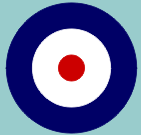
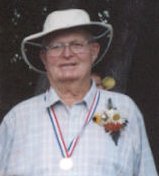
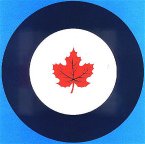

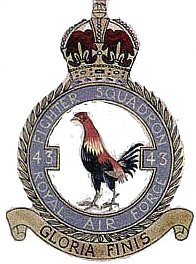
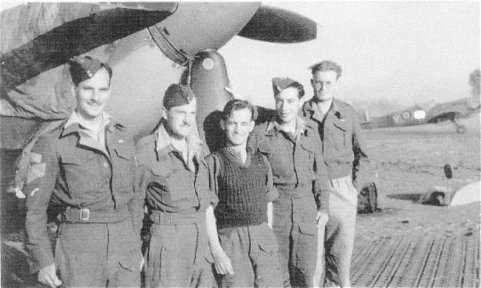

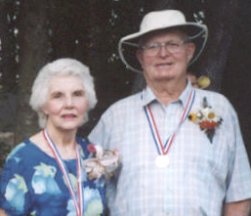
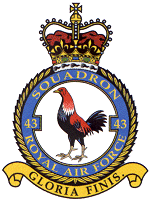


![]()
![]()
![]()
![]()